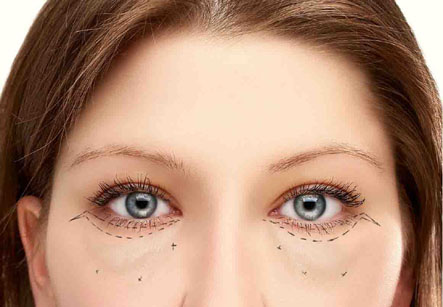Eyelid surgery
Introduction
Below mentioned conditions indicate a need for eyelid surgery:
• Excess skin obscuring the natural fold of the upper eyelids
• Lower eyelid droopiness
• Loose skin hanging down from the upper eyelids, perhaps impairing vision
• Excess skin and fine, “crepe paper type” wrinkles of the lower eyelids
• A puffy appearance to the upper eyelids, making the eyes look tired
• Bags and dark circles under the eyes
Procedure of Eyelid Surgery
Multiple techniques are available in eyelid surgeries which help to improve the appearance of the eyelids. Certain points need to be considered by the cosmetic surgeon before finalizing on the technique to be followed for any particular surgery:
• the position of the eyebrows
We have all the information you need about public and private Cosmetic / Plastic clinics that provide Eyelid surgery in Iran, Islamic Republic Of

• amount of excess fat and skin in the eyelid areas
• the condition of muscles around your eyelids
A. Upper Eyelids
The incision is hidden within the natural fold of the upper eyelid and extends slightly beyond the outside corner into the smile lines or other existing creases. Through this incision, excess skin and fatty tissues are removed. Because the incision follows the natural contour of the upper eyelid, it usually is inconspicuous.
B. Lower Eyelids
The incision is hidden just below the lower lashes. Through this incision, excess skin, muscle and fat are removed, or fat may be redistributed to eliminate puffiness or bulges. As in upper eyelid surgery, placement of the incision in natural crease lines allows for the scar to usually heal in an inconspicuous fashion.
Results of the Surgery:
• The results of cosmetic eyelid surgery are usually long-lasting, but they may be affected by heredity and lifestyle factors.
• Eyelid surgery makes the person look more rested, refreshed and alert.
• One should expect to wait at least several weeks to get an accurate picture of the results of the eyelid surgery, as the healing process is slow.
• Incisions generally fade out a number of months usually becoming barely visible.
• Fat that causes puffiness and gives a baggy look can be removed by this surgery permanently.
• Sometimes loss of tone in the forehead causes additional sagging of the eyebrows which mimics a recurrence of drooping upper eyelids. A correction may require a forehead lift or a secondary eyelid procedure.
Understanding Risks:
Every year, many thousands of people undergo eyelid surgery successfully, without experiencing any major problem. Fortunately, significant complications from aesthetic eyelid surgery are uncommon. The subject of risks and potential complications of surgery is best discussed on a personal basis between the patient and the cosmetic surgeon, or with a staff member in the surgeon’s office. The risks in most surgeries are similar. Some of the potential complications that may be discussed include:
• infection
• scarring
• allergic reactions
• hematoma (an accumulation of blood under the skin that may require removal)
• damage to underlying structures
• changes in sensation
• need for revisions
• unsatisfactory results possibly requiring additional procedures and medical risks.
Following the surgery, there can be a feeling of dryness or irritation in the eye that requires treatment. There is a possibility of impaired eyelid function that sometimes may need to be corrected by additional surgery.
One can help minimize certain risks by following the advice and instructions of the plastic surgeon, both before and after the eyelid surgery.
Other options to eyelid surgery are available:
Aesthetic eyelid surgery can usually correct above given problems, though other treatments may also need to be considered.
• When the upper eyelid condition is accompanied by sagging of the eyebrows, a forehead lift may be recommended.
• Smoothing of crow’s feet may be accomplished with Botox therapy, chemical peeling or laser resurfacing procedures.
• Circles beneath the eyes caused by dark pigmentation may be treated with fillers such as Hyaluronic Acid or fat as well as bleaching solution or chemical peel.